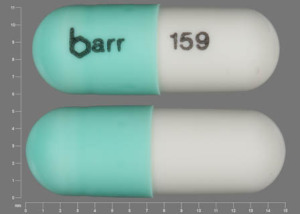Chlordiazepoxide Interactions
There are 445 drugs known to interact with chlordiazepoxide, along with 11 disease interactions, and 2 alcohol/food interactions. Of the total drug interactions, 31 are major, 379 are moderate, and 35 are minor.
- View all 445 medications that may interact with chlordiazepoxide
- View chlordiazepoxide alcohol/food interactions (2)
- View chlordiazepoxide disease interactions (11)
Most frequently checked interactions
View interaction reports for chlordiazepoxide and the medicines listed below.
- Abilify (aripiprazole)
- Adderall (amphetamine / dextroamphetamine)
- Advair Diskus (fluticasone / salmeterol)
- Ambien (zolpidem)
- Celebrex (celecoxib)
- Celexa (citalopram)
- Crestor (rosuvastatin)
- Cymbalta (duloxetine)
- Fish Oil (omega-3 polyunsaturated fatty acids)
- Lasix (furosemide)
- Lexapro (escitalopram)
- Lipitor (atorvastatin)
- Lyrica (pregabalin)
- Metoprolol Succinate ER (metoprolol)
- Metoprolol Tartrate (metoprolol)
- Mobic (meloxicam)
- Paracetamol (acetaminophen)
- Protonix (pantoprazole)
- Seroquel (quetiapine)
- Soma (carisoprodol)
- Vistaril (hydroxyzine)
- Vitamin B1 (thiamine)
- Vitamin B12 (cyanocobalamin)
- Vitamin C (ascorbic acid)
- Vitamin D2 (ergocalciferol)
- Vitamin D3 (cholecalciferol)
- Vyvanse (lisdexamfetamine)
- Xanax (alprazolam)
- Zantac (ranitidine)
- Zoloft (sertraline)
Chlordiazepoxide alcohol/food interactions
There are 2 alcohol/food interactions with chlordiazepoxide.
Chlordiazepoxide disease interactions
There are 11 disease interactions with chlordiazepoxide which include:
- acute alcohol intoxication
- closed-angle glaucoma
- drug dependence
- renal/liver disease
- respiratory depression
- seizures
- prolonged hypotension
- depression
- obesity
- paradoxical reactions
- porphyria
More about chlordiazepoxide
- chlordiazepoxide consumer information
- Compare alternatives
- Pricing & coupons
- Reviews (209)
- Drug images
- Latest FDA alerts (1)
- Side effects
- Dosage information
- During pregnancy
- Drug class: benzodiazepines
- Breastfeeding
- En español
Related treatment guides
Drug Interaction Classification
| Highly clinically significant. Avoid combinations; the risk of the interaction outweighs the benefit. | |
| Moderately clinically significant. Usually avoid combinations; use it only under special circumstances. | |
| Minimally clinically significant. Minimize risk; assess risk and consider an alternative drug, take steps to circumvent the interaction risk and/or institute a monitoring plan. | |
| No interaction information available. |
See also:
Further information
Always consult your healthcare provider to ensure the information displayed on this page applies to your personal circumstances.


